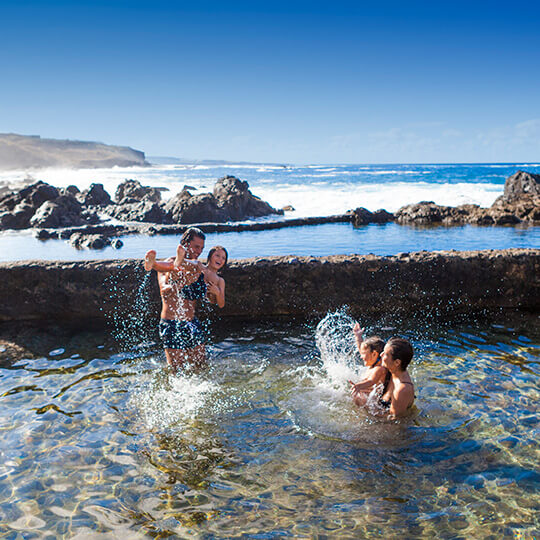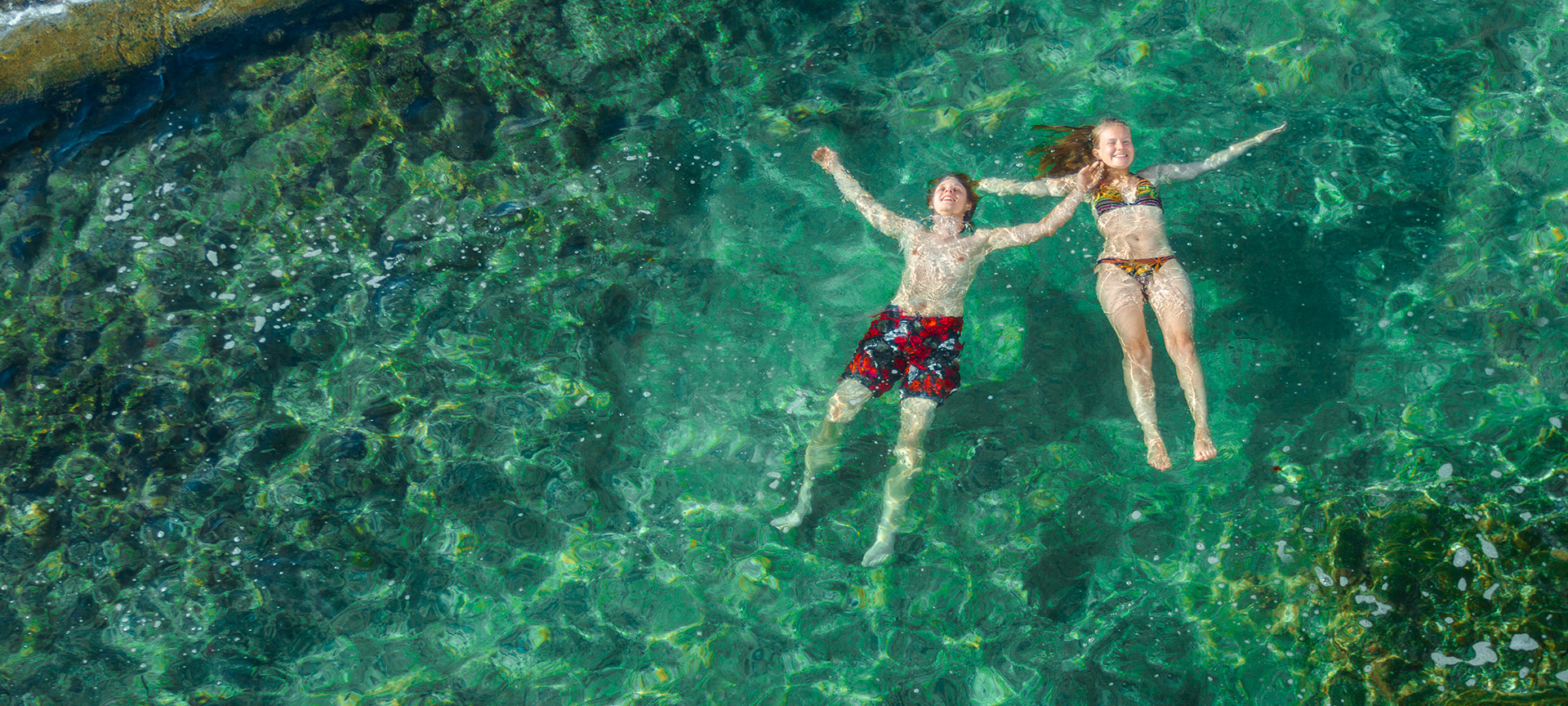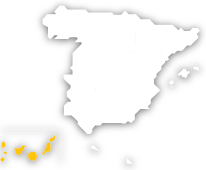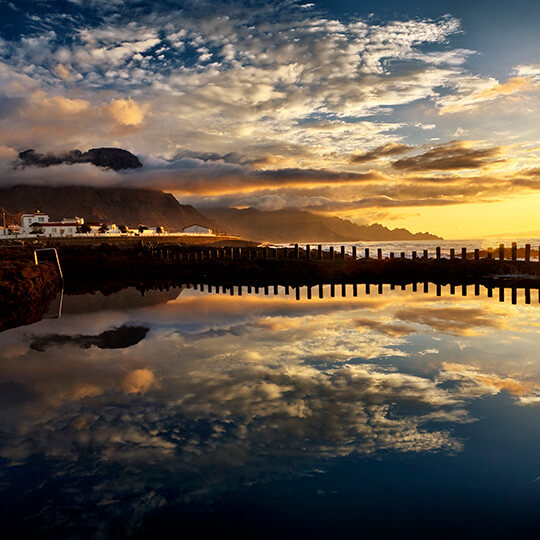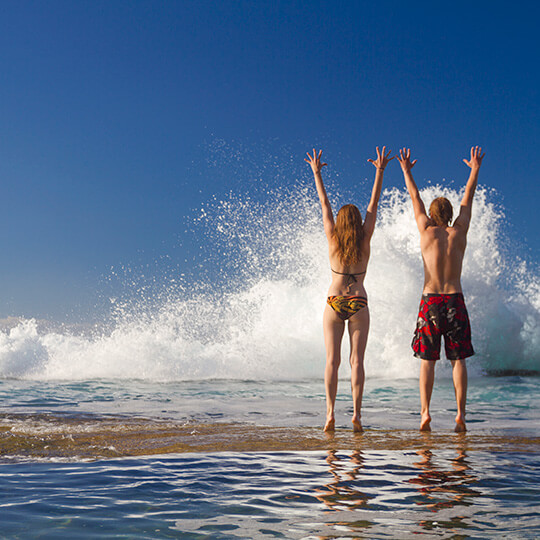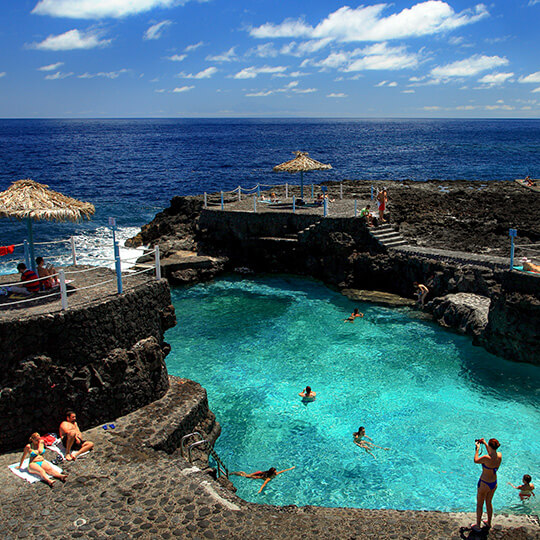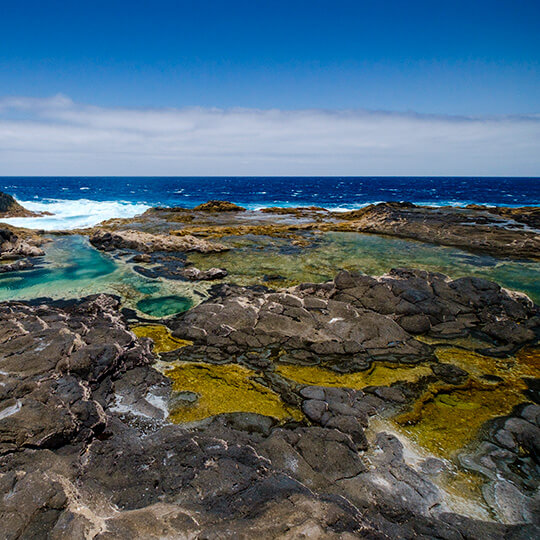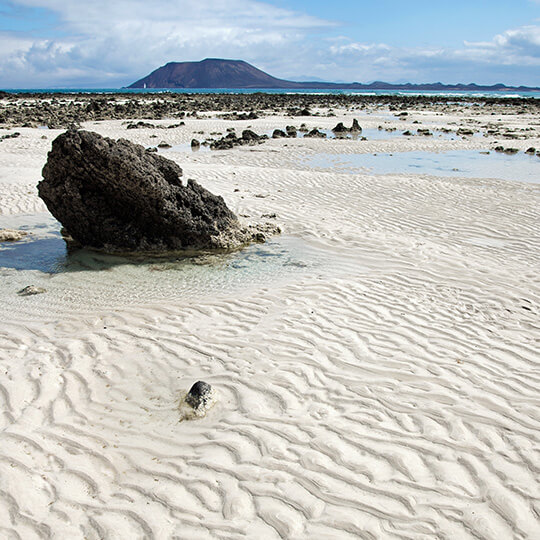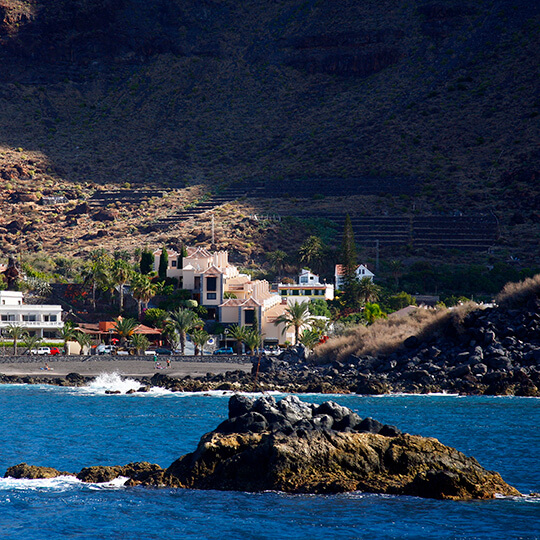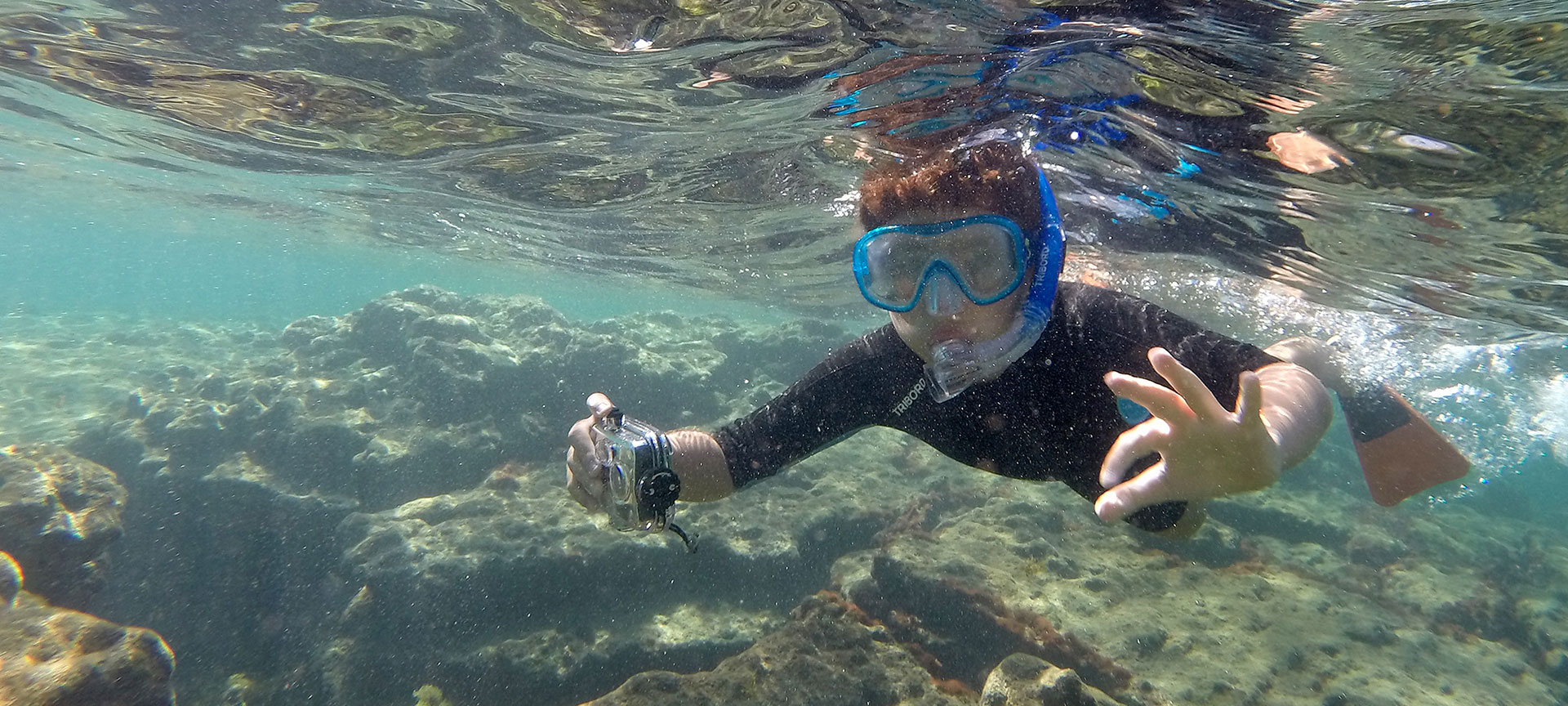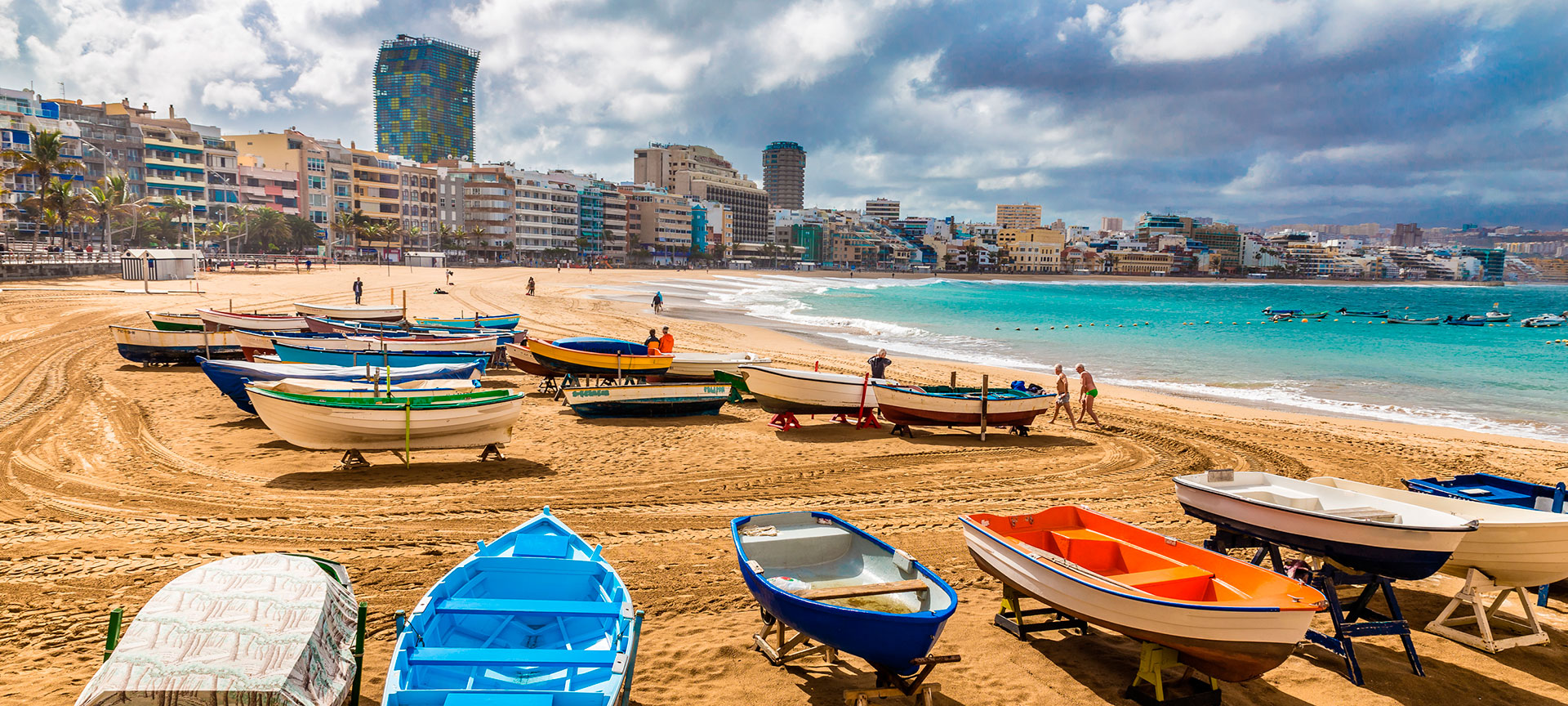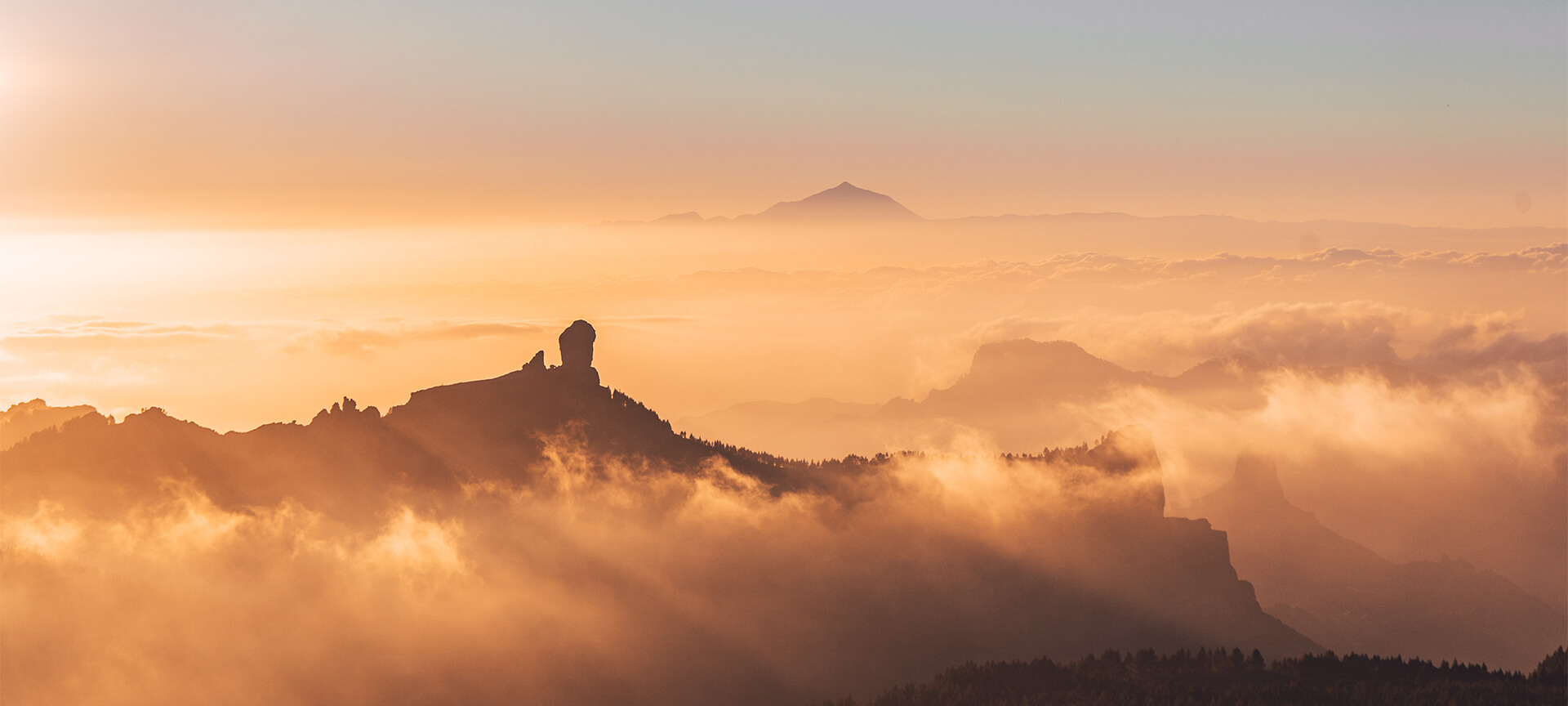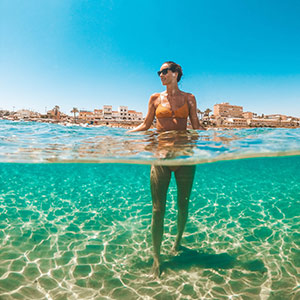Natural pools of Tenerife
The best-known are in the northern part of Tenerife, and two are very close to each other. These are Charco de La Laja and Charco del Viento, two volcanic formations making natural pools. The first one is in San Juan de la Rambla, and although it’s very easy to reach, you’ll probably take your time getting to the water. Why? The views from the lookout point, and all the photos you’ll want to take. The second is also easy to reach from the road to Icod de los Vinos. But here too, there are great views - of Mount Teide, the highest peak in Spain. Charco del Viento has different swimming areas, some with sand, others with rocky arches, but all with crystal-clear water.The natural pools of Bajamar are about 15 kilometres from the historic centre of San Cristóbal de La Laguna, a UNESCO World Heritage site, so these visits can easily be combined. There are several swimming areas, including two large pools, one for children, and a beach of yellow sand protected from the sea.
